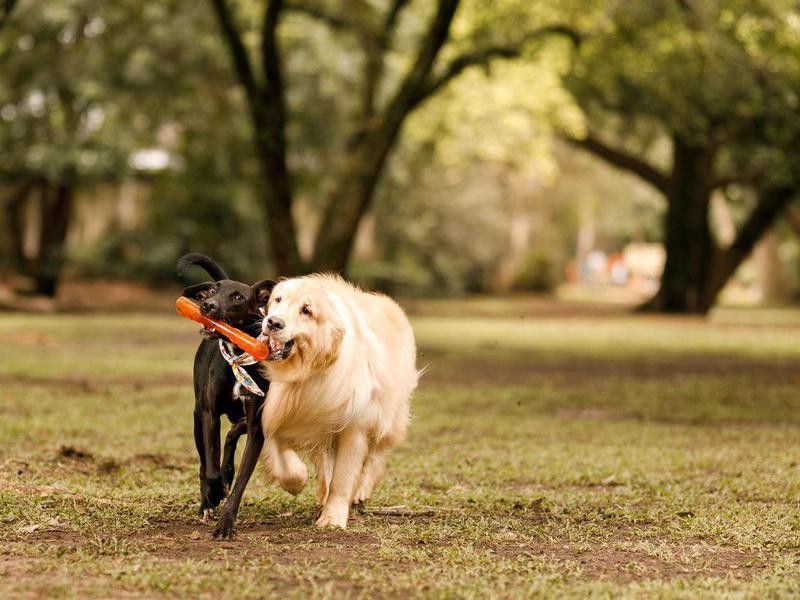If you’re a dog owner in Anchorage, or anywhere in Alaska, you’ve probably heard the same frustrating sentence at least once:
“We’re fully booked until next spring.”
It happens every year. By October, most of Anchorage’s top dog trainers have calendars packed solid. You might wonder, Why so early? Why can’t I just wait until winter break or after the holidays to start?
Here’s the truth: it’s not about trainers being unreasonable, it’s about demand, planning, and Alaska’s unique seasonal rhythms. And if you know how the cycle works, you can absolutely beat the rush.
At Alaska Dog Works, we’ve been training service dogs, therapy dogs, and family companions for over 20 years. We’ve seen firsthand why our schedule, and our competitors’, fills up so quickly, and we know how to help you get ahead of it.
1. Alaska’s Short Training Season Creates a Crunch
In the Lower 48, dog owners have training options year‑round without much interruption. But here in Anchorage, our seasons play a big role in planning.
Summer is packed with outdoor activities, travel, and events.
Fall is when most dog owners realize, “Winter is coming, better train before the snow piles up.”
Winter brings holiday distractions, school breaks, and unpredictable weather that makes travel more difficult.
For example, last year we had a family from Eagle River call in mid‑October hoping to get their young Lab into our Lead Dog Service Dog Training Program. By that time, we were booked through March. They had to wait until spring to start, missing critical months of early development.
2. Puppies Don’t Pause Their Development
Here’s the other big factor: dogs grow and develop quickly.
The socialization window, when your puppy is most receptive to new experiences, closes fast, often around 16 weeks.
Behavior habits form whether you train intentionally or not. Waiting even a few months can mean you’re correcting bad habits instead of building good ones from the start.
We once had a client, Erin from Anchorage, who wanted to wait until after the holidays to start training her Labrador. When we met in February, the sweet puppy had developed leash‑pulling, jumping, and counter‑surfing habits that were much harder to undo than they would have been to prevent. Erin later told us, “I wish I hadn’t waited, training would’ve been so much easier.”
3. The Best Trainers Have Limited Openings by Design
Top trainers don’t try to squeeze in every dog that calls, they carefully manage their caseload so every client gets the attention they deserve.
At Alaska Dog Works, for example:
We take on only a set number of service dog teams per year so we can give each client a tailored, hands‑on experience.
Our therapy dog and obedience clients receive ongoing support between lessons, something that’s only possible if we limit how many teams we work with at a time.
This means our available training slots are intentionally capped. When those are filled, often by October, it’s not because we don’t want to help. It’s because we’re already committed to helping the dogs and owners who signed up early.
4. Service and Therapy Dog Training Requires Long‑Term Planning
If your goal is to have a service dog or therapy dog, starting early isn’t just smart, it’s essential. These programs can take 12 to 24 months from start to finish.
That’s why we encourage prospective clients to schedule a strategy call months before they think they’ll be “ready.” We help you map out a realistic training timeline so your dog is prepared when you need them, whether that’s for public access work, task training, or therapy certification.
One of our most successful graduates, a PTSD service dog named Jasper, began training when he was just 12 weeks old. By the time his handler needed him to work full‑time, Jasper was confident, reliable, and well‑prepared. That wouldn’t have been possible if they’d waited until “the perfect time.”
5. Winter in Alaska Changes Everything
Let’s be honest, winter in Anchorage isn’t exactly training‑friendly for most people.
Short days mean fewer daylight training hours.
Snow and ice can make outdoor sessions challenging.
Holiday schedules make consistent practice harder.
While we absolutely train year‑round, many clients prefer to start in summer or fall, when they have more daylight, more energy, and more opportunities for public outings. This preference means fall fills up quickly, especially September and October.
How to Beat the Rush
If you’re reading this and thinking, Uh oh… I’m already behind, don’t worry. Here’s how you can secure a spot with a top Anchorage trainer before you’re left waiting months.
1. Book a Strategy Call Now
Even if you’re not 100% ready to start today, we can:
Evaluate your dog’s needs
Recommend the right training path
Reserve your spot for the upcoming season
We offer free strategy calls to map out your goals, timeline, and budget.
2. Start Sooner Than You Think You Should
There’s never a “perfect time” (we actually wrote an entire article about this—read it here). Life won’t slow down for dog training. Start now, and your future self will thank you.
3. Consider Off‑Peak Training
If your schedule allows, starting in late winter or early spring can be a smart move. Fewer people are calling then, which means you might have more flexibility in scheduling. This is especially true for refresher training or advanced work.
Examples From the Field
The Therapy Dog with Perfect Timing
Samantha from Palmer wanted her golden retriever, Daisy, to become a therapy dog. She called us in July, and we scheduled her for a September start. By December, Daisy was confidently working in local assisted living facilities. Samantha told us, “If I’d waited until October to call, I wouldn’t have been able to start until March.”
The Service Dog Success Story
A veteran in Wasilla contacted us in August for help training a PTSD service dog. Because they reached out early, we could match them with the right puppy and get started immediately. By winter, the dog had already mastered basic obedience, making advanced public access work in spring much smoother.
The Missed Opportunity
One family called us in November to start obedience training for their high‑energy malamute mix. We were fully booked until April. By the time they started, their dog had picked up more problem behaviors, making training longer and more challenging than it would’ve been if they’d called in September.
Why You Shouldn’t Wait Until October
The bottom line? In Anchorage, waiting until October to find a trainer is a gamble you’re likely to lose. The combination of seasonal demand, limited trainer availability, and your dog’s developmental timeline makes early booking the smartest move you can make.
Whether your goal is basic manners, advanced obedience, therapy work, or full service dog training, planning ahead means:
Better results because you start during ideal learning stages
Less frustration waiting months to begin
More flexibility to choose your trainer and schedule
Book Your Spot Before It’s Gone
At Alaska Dog Works, we’re passionate about helping Alaskan dog owners train smarter, earlier, and with confidence. We work with clients across Anchorage, Eagle River, Wasilla, Palmer, and beyond.
Our schedule fills up fast every year, often by October. Don’t wait until your dream training program is months away.
📅 Schedule your free strategy call today to plan your dog’s training journey.
📞 Or call us at 206‑752‑DOGS to speak directly with one of our trainers.
Your dog doesn’t need “perfect timing.” They need a committed trainer—and a committed owner—starting now.










